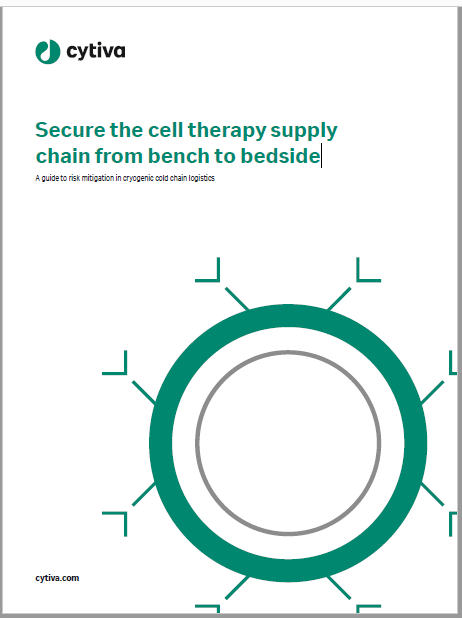Designing clinical trials for rare diseases can prove challenging with limited resources and high operation costs. But three nontraditional trial designs—platform trials, basket trials, and umbrella trials—could revolutionise the space. Clinical Trials Arena will explore each design and its potential to shape the future of rare disease research.
Platform trials can streamline rare disease research as they evaluate multiple treatments and diseases under a single, durable master protocol. This trial design has the flexibility to add and drop treatment arms as data develops and new drug candidates emerge.
By focusing on disease groups with similar phenotypes and manufacturing needs, rare disease researchers can utilise platform trials to increase efficiency and reduce operation costs. A successful platform trial requires choosing compatible diseases, negotiating with regulators and selecting appropriate endpoints and sites.

Can platform trials streamline dystrophies and gene manufacturing?
Rare muscular dystrophies have similar disease profiles and an overlapping pool of experts, making this field a strong candidate for a platform trial design, explains NIH Director of Rare Disease Research Anne Pariser.
Most dystrophies have different underlying causes and thus require different drugs. But monitoring, equipment, and endpoints could be similar, Pariser notes. As a result, a durable master protocol could live on even if the trial continually rotates different dystrophy types and treatments, she explains.
Platform trials are also attractive for rare disease gene therapies, where different gene constructs can rotate in and out of viral particles, Pariser adds. There are opportunities to streamline across gene therapy manufacturing, preclinical work, assay development, and clinical monitoring expertise, she notes. Streamlining these processes could add efficiencies, resulting in significant cost savings, she told this news service.

US Tariffs are shifting - will you react or anticipate?
Don’t let policy changes catch you off guard. Stay proactive with real-time data and expert analysis.
By GlobalDataContending with regulatory concerns
From a regulatory perspective, master protocol designs typically don’t directly lead to approvals, a biostatistician notes. Instead, they are often intended to detect an efficacy signal that forms the basis for a subsequent registrational trial, he says.
While the FDA will initially recommend a traditional, randomised, placebo-controlled trial investigating a single treatment, the agency can be flexible with rare diseases, a former FDA orphan drug official says. For example, if a rare disease only affects a few hundred patients, the FDA would be willing to consider a nontraditional trial that can still demonstrate a drug’s safety and efficacy, adds the former official, who now works as a regulatory consultant. To maximise chances, companies should come to FDA trial design meetings prepared with extensive animal data in all the indications and treatments they plan to pursue, she says.
Pariser adds that in rare diseases, the regulatory burden of evidence can be lower. “With rare diseases, it’s not uncommon to get approval based on evidence from one adequate and well-controlled trial,” she says. “A platform trial could be that trial.”
Platform trials’s location and endpoints are key
Since rare disease experts are usually clustered in specific centers and paediatric hospitals, these sites could be well-suited trial locations. If a center specialises in multiple, similar rare diseases, it could already have the basic infrastructure to pursue a platform trial, Pariser says.
Ideally, efficacy endpoints of a platform trial design would include a short-term biomarker, making it easier to drop arms that underperform in interim analyses, Pariser says. But selecting an endpoint can be challenging in rare diseases, which often do not progress as fast or as predictably as cancer, she adds.
In cancer, there are multiple standardised endpoints such as progression-free survival (PFS) and overall response rate (ORR). In contrast, rare diseases often lack similar universal endpoints. “If we could better understand rare diseases, then that would make it a whole lot easier to design good quality clinical trials,” Pariser says.
Platform trials in action
In addition to numerous platform trials in oncology and Covid-19, there are several important platform designs in rare diseases in early stages. For instance, the NIH is breaking into the rare disease space with the Platform Vector Gene Therapy (PaVe-GT) trial.
Under this design, the NIH will test whether the same adeno-associated vector (AAV) serotype, AAV-9, can be used to develop gene therapies for four rare diseases. These include two neuromuscular junction disorders—Dok7 deficiency and Collagen Q deficiency—and two metabolic diseases—propionic acidemia and isolated methylmalonic acidemia.
PaVe-GT will develop and test AAV-9, with a different gene for each indication, using a single master protocol. Though not yet at the stage of clinical testing, Pariser says her team has seen signs of early progress: “On a small scale, we’re already seeing some efficiencies and really seamless information sharing between our investigators and our team.”
Outside of rare diseases, the Phase II/III STAMPEDE trial (NCT00268476) is an active platform trial with an estimated enrollment of more than 12,000 patients with prostate cancer. There are currently eleven treatment arms, three of which are open for recruitment: standard of care, metformin, and transdermal oestradiol. Overall survival is the primary endpoint, with secondary endpoints including adverse events and cost effectiveness measured by EuroQol.
Cell & Gene Therapy Coverage on Clinical Trials Arena supported by Cytiva.
Editorial content is independently produced and follows the highest standards of journalistic integrity. Topic sponsors are not involved in the creation of editorial content.





